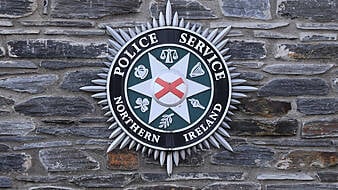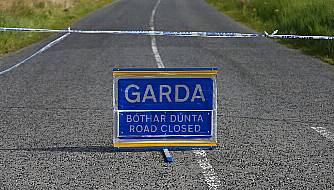A ballistics expert has told the trial of a law professor who is accused of murdering a trespasser on his farm that the practice of mixing different types of ammunition in a revolver is "extremely dangerous".
Evidence has already been given that leading barrister Diarmuid Phelan told a sergeant that the three spent rounds in his Smith & Wesson revolver, which had been fired at the deceased Keith Conlon, were "possibly crow-shot".
Mr Phelan (56) has pleaded not guilty to murdering father-of-four Mr Conlon (36) at Hazelgrove Farm, Kiltalown Lane, Tallaght, Dublin 24, on February 24th, 2022.
Mr Phelan is a barrister, law lecturer and farmer who owns Hazelgrove, formerly a golf course in Tallaght.
A Sergeant has given evidence that he took the firearm at the scene and made it safe. Sgt Simon Whelan has said it was an eight-shot cylinder and there were eight rounds loaded into it. "I noticed three of the rounds had strike marks to indicate three rounds had been shot," he said. He said projectiles were still in the other five rounds.
Giving evidence today, Detective Garda Seamus O'Donnell, who is attached to the ballistics and forensics investigation section of An Garda Síochána, told prosecuting counsel John Byrne SC that he was asked to go to Hazelgrove Farm on February 22nd.
He said he examined the scene at the bunker, where the deceased's clothing was located and a small pool of blood on the ground.
Det Gda O'Donnell later examined the two firearms at the scene; a .22 inch long rifle caliber Smith & Wesson brand airlight revolver and a .308 inch Winchester calibre laser brand bolt action rifle. He said both weapons were in good condition.
Witness Det Gda O'Donnell said he returned to Hazelgrove Farm on February 23rd.
The detective said there was a safe located behind a wardrobe in the accused's office/bedroom, where he found approximately 550 rounds of .22 inch long rifle caliber ammunition and 60 rounds of .308 Winchester calibre ammunition.
He said a 50 round box of the .22 inch long rifle calibre CCI brand stinger-type ammunition was opened and held 42 rounds. He said eight rounds were missing from the box. He said stinger-type/hollow nosed ammunition has a particular velocity when discharged and generally has lead hollow-pointed bullets.
The detective said he examined another opened box of bullets; a 20 round box of .22 inch long rifle calibre brand no 12 shot size pest control ammunition. He said the box contained four rounds but there was a fifth loose round in the box.
Asked about pest control ammunition, Det Gda O'Donnell said it is quite different and is manufactured and marketed to be used to fire at and kill pests such as small animals, birds and snakes. He said pest control ammunition is compatible to be used in a Smith & Wesson revolver.
The detective agreed with the prosecutor that a revolver doesn't take just one brand or type of bullet. The witness added: "As long as the calibre is correct". He said hollow nosed/stinger, rounded and pest control bullets of the same calibre can be fired from a Smith & Wesson revolver. The jury were shown the three types of bullets which can be fired from the revolver.
Asked by Mr Byrne whether there is a particular significance to hollow nosed bullets as opposed to round nosed, the witness said when hollow nosed strike an unyielding surface the diameter of the bullet expands, and they can create a bigger wound. He said round-nosed bullets penetrate better.
The detective said as part of his investigation he was given a discharged .22 inch calibre bullet, which was the fatal bullet recovered from Mr Conlon during his postmortem, as well as two small lead fragments.
He said the revolver, which weighed .325kg's, had the capacity to take eight bullets and that five live rounds of .22 ammunition remained within the weapon and three discharged cartridges were recovered.
He said he took the view that the eight rounds in the revolver were consistent with the eight rounds missing from the box of .22 rifle calibre CCI brand stinger-type ammunition.
He said the live rounds were copper-washed, lead hollow-pointed bullets consistent with the bullets in the box which had 42 rounds of ammunition.
He agreed that the fatal bullet which killed Mr Conlon came from the revolver and that it must have come from one of the three cartridges that remained within the revolver. "It had to have exited one of the discharged cases remaining in the chamber," said the witness.
He agreed that the bullet which killed Mr Conlon and the five live rounds in the revolver were all hollow-pointed bullets.
"That means that on February 22 there were at least six hollow pointed bullets within the revolver?" asked Mr Byrne. "Yes, a minimum of six," he replied. He agreed the fatal bullet had come from one of the three discharged cartridge cases.
The witness was asked from his examination of the three discharged cartridges, other than to say one of them contained the hollow-nosed bullet – the fatal bullet – was he in a position to say what the other two bullets contained. The detective said he wasn't as the pest control rounds had the same cartridge cases as the hollow pointed ones.
"You can't say whether two of the discharged cartridges within the revolver were hollow pointed or pest shot bullets" asked Mr Byrne. The witness said it was not possible to say.
Asked about a speed loader case also found which contained ten sets of eight long rifle calibre rounds of various types, the detective said it is designed to assist the shooter to quickly load the gun in one movement with eight rounds of ammunition. The witness said the speed loader is presented to the cylinder of the revolver, releases the eight rounds in one movement and is specifically designed to use with Smith & Wesson revolvers. He agreed it's a considerably faster method than loading each round individually.
The witness agreed nowhere within the case was there a mix of pest-controlled and either hollow-pointed or round-nose bullets.
Asked about the practice of mixing pest control ammunition with round or hollow-nosed bullets, the witness said "in general the mixing of different types of ammunition is never considered a good idea for the simple reason you might make mistakes with types of ammunition, it is never recommended".
The detective was asked whether there is a view that mixing pest shot and hollow round bullets is dangerous. He said he would consider the practice of mixing different types of ammunition as extremely dangerous in this type of firearm. "This is two different types of ammunition with two different effects," he said.
He said it was stated in the Smith & Wesson safety instructional manual not to mix ammunition.
In her opening address Roisin Lacey SC said the jury will hear evidence that on the day in question three men including Mr Conlon had trespassed on a wooded area of Mr Phelan's land while hunting foxes or badgers.
Ms Lacey said that Mr Phelan told gardai he became concerned about a dog running loose on his land towards his sheep and shot it with his Winchester rifle, whereupon he said three men immediately "exploded" from the wooded area and began threatening him.
The 12 jurors were also told by the State that Mr Phelan said he was shaking with fear and "scrambled" up a bank to get away but when the deceased man Keith Conlon and a second man kept coming he believed they were "coming to fulfil the threats they had made".

As they got closer, Mr Phelan said he reached for his Smith & Wesson revolver in his pocket and fired in the air over their heads but was "stunned when one man went down", the court has heard.
Mr Conlon, from Kiltalown Park in Tallaght, was seriously injured in the shooting incident on February 22 and died at Tallaght University Hospital two days later.
The State's case, the prosecution highlighted, is that when the third shot was fired, the gun was pointed in the direction of the deceased who was shot in the back of the head when he had turned away to leave. "In those circumstances we say the accused intended to kill or cause serious injury," counsel said.
The trial continues on Thursday before Ms Justice Siobhan Lankford and a jury of nine men and three women.







